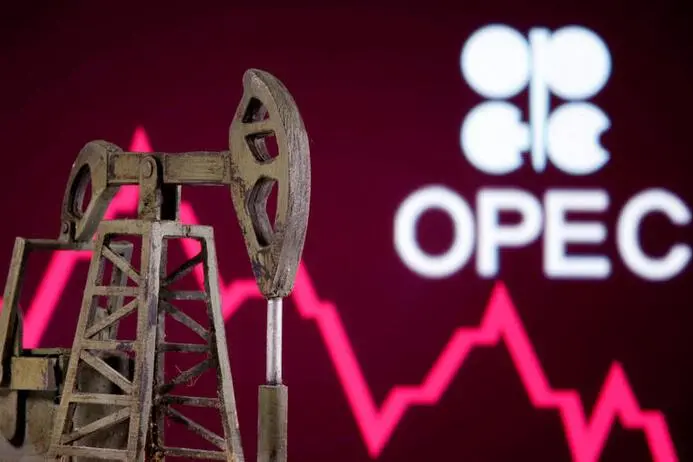PHOTO
LONDON - Investors remained extremely bearish about the outlook for crude oil prices in the run up to the OPEC+ ministerial meeting on Nov. 30, anticipating the group would not or could not cut output enough to boost prices.
Hedge funds and other money managers purchased the equivalent of 14 million barrels in the six most important petroleum futures and options contracts over the seven days ending on Nov. 28.
But that came after they had sold petroleum in eight of the previous nine weeks, reducing their position by a total of 342 million barrels.
Chartbook: Oil and gas positions
In the most recent week, funds purchased just 4 million barrels of crude, with small purchases of Brent (+12 million) largely offset by sales of NYMEX and ICE WTI (-8 million).
The net position in crude of 229 million barrels was in only the 1st percentile for all weeks since 2013 despite the imminence of an OPEC+ meeting expected to reduce production.
Fund managers have not been deterred from betting on a further fall in prices by the threat of action from Saudi Arabia and its partners.
In the premier NYMEX WTI contract, funds had amassed bearish short positions amounting to 116 million barrels by Nov. 28, up from 20 million barrels eight weeks earlier.
The accumulation of bearish short positions is the largest since the end of June 2023 and before that March 2023 and February 2020 (in the run up to the first wave of the coronavirus epidemic reaching the United States).
U.S. GASOLINE AND DIESEL
In contrast to crude, funds continued to accumulate bullish long positions in refined fuels such as gasoline and diesel.
Funds purchased the equivalent of 10 million barrels split between U.S. gasoline (+2 million), U.S. diesel (+4 million) and European gas oil (+4 million).
Funds held a net long position in gasoline of 66 million barrels (72nd percentile) up from 26 million barrels (19th percentile) six weeks earlier.
U.S. gasoline stocks were almost exactly in line with the prior ten-year seasonal average on Nov. 24 – eliminating a surplus of 7 million barrels (3% or +0.93 standard deviations) a month earlier.
Positions in U.S. diesel of 36 million barrels (84th percentile) were even more bullish with long positions outnumbering shorts by a ratio of 3.64:1 (85th percentile).
U.S. distillate fuel oil inventories were 16 million barrels (-13% or -1.15 standard deviations) below the seasonal average on Nov. 24, an indication the market remains tight.
U.S. NATURAL GAS
Investors have finally given up their repeated efforts to become bullish about the outlook for U.S. gas prices, thwarted by continued production growth and the prospect of a warmer-than-average winter caused by a strong El Niño.
Working gas inventories swelled to a surplus of 186 billion cubic feet (bcf) (+5% or +0.67 standard deviations) above the ten-year average on Nov. 24 from 52 bcf (+1% or +0.23 standard deviations) three weeks earlier.
The gas market has stayed in surplus despite prices remaining towards their lowest levels since the start of the century once adjusted for inflation.
In real terms, front-month prices had fallen back to just the 8th percentile for all days since the start of the century by the end of November, down from the 28th percentile at the end of October.
Fund managers sold the equivalent of 256 bcf over the seven days ending on Nov. 28 taking total sales over the most recent four weeks to 1,214 bcf.
As a result, funds held a net short position of 271 bcf (24th percentile for all weeks since 2010) on Nov. 28, the most bearish since September 2023 and before that March 2023.
John Kemp is a Reuters market analyst. The views expressed are his own. Follow his commentary on X: https://twitter.com/JKempEnergy
(Editing by Kirsten Donovan)























